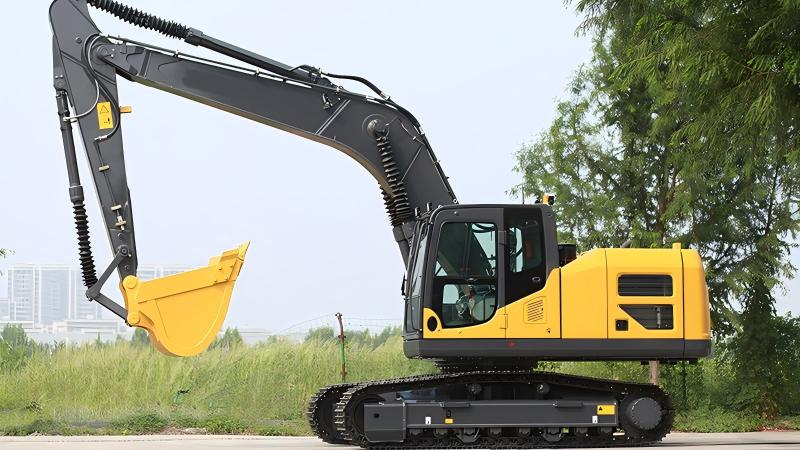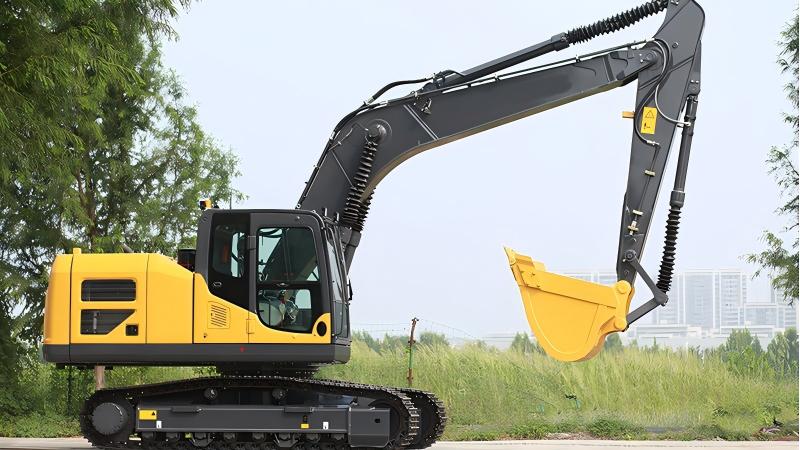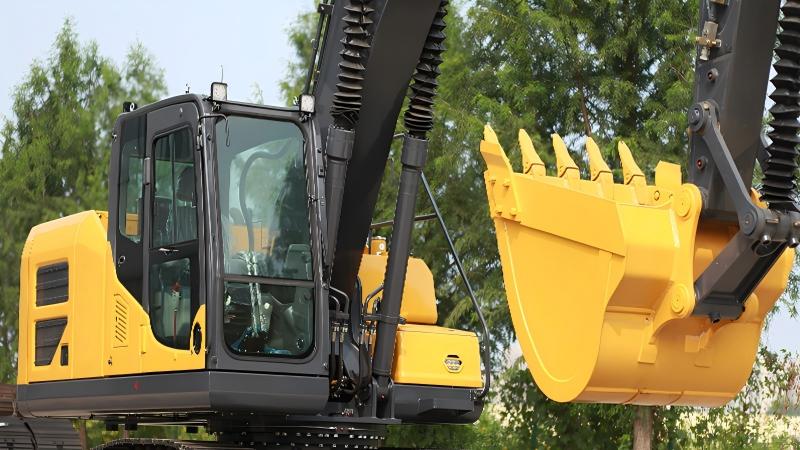Mini excavators are indispensable tools on countless construction sites, landscaping projects, and utility jobs. Their compact size, versatility, and efficiency make them ideal for navigating tight spaces while still delivering significant digging power. However, like any complex piece of heavy machinery, mini excavators are subject to a range of common problems that can lead to downtime, costly repairs, and reduced productivity. Understanding these issues is crucial for owners and operators to implement proactive maintenance, identify early warning signs, and ensure the longevity and reliability of their equipment.
This article will delve into the most frequent problems encountered with mini excavators, categorized by the system affected, and offer insights into their causes and potential solutions.
1. Hydraulic System Issues
The hydraulic system is the heart of a mini excavator, responsible for powering all its movements, from the boom and bucket to the tracks and swing. Consequently, many common problems stem from this complex system.
Loss of Power/Slow Operation: This is a very common complaint.
Causes: Low hydraulic fluid levels, clogged hydraulic filters, worn-out hydraulic pump, air in the hydraulic system, faulty relief valves, or internal leaks within cylinders or hoses.
Solutions: Regular checking and topping up of hydraulic fluid, scheduled filter replacement, professional inspection of the pump and valves, and bleeding the system if air is suspected.
Hydraulic Leaks: Visible oil leaks are a clear sign of trouble.
Causes: Worn or damaged hoses, cracked lines, failed O-rings or seals in cylinders, loose fittings, or damaged pumps/motors.
Solutions: Regular visual inspection of all hoses and connections, immediate replacement of damaged components, and tightening of loose fittings. Hydraulic fluid is corrosive and can damage other components if leaks are ignored.
Overheating Hydraulic Fluid: High fluid temperatures can degrade the oil and damage components.
Causes: Clogged hydraulic cooler, low fluid level, incorrect fluid type, constant heavy-duty operation, or a failing hydraulic pump.
Solutions: Ensuring the cooler is clean and free of debris, maintaining correct fluid levels, using the manufacturer-specified hydraulic fluid, and allowing the machine to cool down during prolonged heavy use.
Jerky or Erratic Movements: Instead of smooth operation, the movements become inconsistent.
Causes: Air in the hydraulic system, internal leaks, worn control valves, or contaminated hydraulic fluid.
Solutions: Bleeding the system, checking for internal leaks, and ensuring regular hydraulic fluid and filter changes.
Engine and Fuel System Problems
The engine provides the power, and its health is vital for the excavator's overall performance.
Starting Issues: Difficulty starting or failure to start.
Causes: Dead or weak battery, faulty starter motor, clogged fuel filter, contaminated fuel, glow plug issues (especially in cold weather), or problems with the fuel injection system.
Solutions: Regular battery checks and charging, fuel filter replacement, using clean fuel, inspecting glow plugs, and professional diagnosis for injection system problems.
Loss of Engine Power/Stalling: The engine struggles under load or unexpectedly shuts down.
Causes: Clogged air filter, dirty fuel injectors, faulty fuel pump, turbocharger issues (if equipped), low compression, or sensor malfunctions.
Solutions: Regular air and fuel filter replacement, cleaning or replacing injectors, checking fuel pump pressure, and professional diagnostics for complex issues.
Excessive Smoke from Exhaust: The color of the smoke indicates different problems.
Blue Smoke: Burning oil, often due to worn piston rings, valve seals, or turbocharger issues.
Black Smoke: Incomplete combustion, usually from a rich fuel mixture, dirty air filter, faulty injectors, or fuel pump problems.
White Smoke: Unburnt fuel (especially in cold weather) or, more seriously, coolant entering the combustion chamber (head gasket failure).
Solutions: Varies widely depending on smoke color, requiring professional diagnosis and specific repairs.
Fuel Leaks: Dangerous and wasteful.
Causes: Damaged fuel lines, loose connections, or a cracked fuel tank.
Solutions: Immediate repair or replacement of leaking components.
Undercarriage and Track Issues
The undercarriage bears the weight of the machine and facilitates movement. Problems here can be very expensive.
Track Derailment: Tracks coming off the idlers or sprockets.
Causes: Improper track tension (too loose), worn idlers, sprockets, or rollers, operating on uneven terrain, or debris accumulation.
Solutions: Regular checking and adjusting track tension, cleaning the undercarriage to prevent debris buildup, and timely replacement of worn undercarriage components.
Excessive Track Wear: Premature wear of track components.
Causes: Incorrect track tension (too tight or too loose), abrasive operating conditions, prolonged operation on slopes, or worn sprockets/idlers.
Solutions: Maintaining correct track tension, avoiding unnecessary aggressive turns, and ensuring proper operation techniques.
Noisy Operation: Squeaking, grinding, or clunking sounds from the tracks.
Causes: Dry or seized track components, worn rollers/idlers, or debris caught in the tracks.
Solutions: Lubrication of components, cleaning the undercarriage, and replacing worn parts.
Electrical System Problems
Modern mini excavators rely heavily on electrical components for starting, monitoring, and control.
Battery Issues: Dead battery, difficulty holding a charge.
Causes: Old battery, faulty charging system (alternator), parasitic drain, or loose/corroded terminals.
Solutions: Regular battery testing, cleaning terminals, checking alternator output, and identifying/fixing parasitic drains.
Wiring Harness Damage: Exposed or damaged wires.
Causes: Abrasion, rodent damage, or exposure to elements.
Solutions: Regular visual inspection, immediate repair or replacement of damaged sections.
Sensor Failures: Malfunctioning sensors providing incorrect readings or causing operational issues.
Causes: Wear and tear, contamination, or electrical shorts.
Solutions: Professional diagnosis using diagnostic tools to identify and replace faulty sensors.
Indicator Lights/Gauges Not Working: Essential for monitoring machine health.
Causes: Blown fuses, faulty wiring, or malfunctioning sensors/gauges.
Solutions: Checking fuses, inspecting wiring, and testing components.
Swing and Slew System Problems
The ability of the excavator to rotate its upper structure is crucial.
Excessive Play/Loose Swing: The upper structure has too much movement or "slop."
Causes: Worn swing bearing, loose mounting bolts, or worn gears in the swing drive.
Solutions: Professional inspection and replacement of the swing bearing or tightening of bolts. This is a critical safety issue.
Noisy Swing Operation: Grinding or clunking sounds during rotation.
Causes: Lack of lubrication in the swing bearing, worn gears, or foreign objects in the swing mechanism.
Solutions: Regular greasing of the swing bearing, inspection of gears, and removal of any debris.
Slow Swing Speed: The upper structure rotates too slowly.
Causes: Low hydraulic pressure to the swing motor, worn swing motor, or issues with the swing brake.
Solutions: Checking hydraulic pressure, inspecting the swing motor, and adjusting/repairing the swing brake.
Attachment and Bucket Issues
Problems with the working end of the excavator.
Excessive Pin and Bushing Wear: Play between the bucket/attachment and the boom/stick.
Causes: Lack of proper lubrication, abrasive working conditions, or general wear and tear over time.
Solutions: Regular greasing, timely replacement of worn pins and bushings. This is a common and often overlooked maintenance item that can lead to more significant damage if ignored.
Bucket Damage: Dents, cracks, or worn teeth.
Causes: Impact with hard objects, digging in abrasive materials, or general heavy use.
Solutions: Repairing cracks, replacing worn teeth, or replacing the bucket if severely damaged.Proactive Maintenance: The Best Defense
The vast majority of common problems with mini excavators can be mitigated or prevented through proactive and regular maintenance. This includes:
Daily Pre-Operation Checks: Visual inspection for leaks, damage, and proper fluid levels.
Following Manufacturer's Maintenance Schedule: Adhering to recommended intervals for fluid changes (engine oil, hydraulic fluid, coolant), filter replacements (oil, fuel, air, hydraulic), and greasing.
Regular Cleaning: Keeping the machine clean, especially the undercarriage and cooler fins, prevents debris buildup and overheating.
Using High-Quality Fluids and Parts: Never compromise on the quality of oil, fuel, or replacement parts.
Operator Training: Properly trained operators reduce stress on the machine and can identify problems early.
Addressing Issues Promptly: Ignoring small problems can quickly lead to larger, more expensive failures.
By understanding these common issues and implementing a robust maintenance program, owners and operators can maximize the uptime, extend the lifespan, and ensure the safe and efficient operation of their mini excavators. Investing in proper care ultimately leads to significant savings and increased productivity over the life of the machine.
Post time:Sep-25-2020



